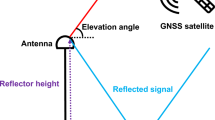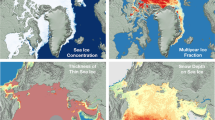Abstract
The employment of frequency re-use in orthogonal polarization continues to gain recognition due to the congestion in the lower frequency bands and the demand for more satellite service applications. However, communication signals operating above 10 GHz and adopting frequency re-use in orthogonal polarization, are often hampered by cross-polarization among others. In this paper, an attempt has been made to estimate cross-polarization discrimination (XPD) due to subtropical rain at super high frequency ranges in order to estimate accurately the signal total availability needed for satellite services in this region. Cross-polarization has been estimated based on the ITU model in the recommendation 618-9 over the Intelsat 17 (IS-17) Satellite (Geostationary at 66°E) with its service footprint links, at the respective elevation angle, to each of the nine locations within the provinces of South Africa. The estimation is based on modification using log-normal distributions of raindrop sizes at 20 °C and assuming circular polarization for Earth-space propagation paths. Some results of the influence of co-polar attenuation, frequency and subtropical rainfall rates are investigated. The overall information will enable the system provider to locate repeater stations for optimum performances within the provinces of South Africa.




Similar content being viewed by others
References
Brussaard, G., & Watson, P. A. (1995). Atmospheric modelling and milliliter wave propagation (1st ed.). London: Chapman and Hall.
Ajewole, M. O., Kolawole, L. B., & Ajayi, G. O. (1999). Cross polarization on line-of-sight links in a tropical location: Effects of the variation in canting angle and rain dropsize distributions. IEEE Antenna and Propagation, 47(8), 1–6.
Cheruku, D. R. (2010). Satellite communication (p. 54). New Delhi: I.K International Pvt Ltd.
Tan, J., & Thurai, M. (1997). Rain induced cross-polarization on line of sight system at 38 GHz. IEEE Proceedings H. Microwave Antenna Propagation, 144, 20.
Ajewole, M. O., Kolawole, L. B., & Ajayi, G. O. (1999). Theoretical study of the effect of different types of tropical rainfall on microwave and millimeter-wave propagation. Radio Science, 34(5), 1103–1124.
Watson, P. A., & Arbabi, M. (1973). Rainfall cross polarization at microwave frequencies. Proceedings of the IEEE, 120, 413–418.
Matricciani, E. (1997). Co-polar and co-channel satellite interference during rain at 11:6 GHz estimated from radar measurements. International Journal of Satellite Communications, 1997(15), 65–71.
Chu, T. S. A. (1982). Semi-empirical formula for microwave depolarization versus rain drop attenuation on earth-space paths. IEEE Transactions on Communications, 30(12), 2550–2554.
Van de Kamp, M. (1999). Depolarization due to rain: XPD-CPA relation. International Journal of Satellite Communications, 9(3), 285–301.
Nowland, W. L., Olsen, R. L., & Sharkofsky, I. P. (1977). Theoretical relationship between rain depolarization and attenuation. Electronic Letters, 13, 676–678.
Kwon, S. C. & Stuber, G. L.(2010). 3-D geometry based statistical modeling of XPD in wireless communication channel. In: Vehicular Technology Conference, IEEE (pp. 1–5).
Degli-Esposti, V., Kolmonen, V., Vitucci, E. M., & Vainikanen, P. (2011). Analysis and modeling on Co-and cross-polarized urban radio propagation for Dual-polarized MIMO wireless system. IEEE Transactions on Antennas and Propagation, 59(11), 4247–4256.
Ajewole, M. O., & Afolayan, B. O. (2008). Rain induced depolarization scaling parameters for linearly polarized SHF waves communication on Earth-space paths. Journal of Pure and Applied sciences, 14(2), 235–240.
Oguchi, T. (1983). Electromagnetic wave propagation and scattering in rain and other hydrometeor. Proceedings of IEEE, 71(9), 1029–1078.
Adetan, O., & Afullo, T. J. (2013). Computation of cross-polarization due to rain over Durban, South Africa. International Journal of Scientific and Engineering Research, 4(10), 1165–1175.
Oguchi, T., & Hosoya, Y. (1974). Scattering properties of oblate rain drops and the cross- polarization of radio wave due to rain, Part II: Calculation at microwave and millimeter wave regions. Journal of Radio Research Laboratory Japan, 21, 191–259.
Oguchi, T. (1973). Attenuation and phase rotation of radio waves due to rain: Calculations at 19.3 and 34.8 GHz. Radio Science, 8, 31–38.
Ojo, J. S. (2012). Estimation of cross-polarization due to rain over some stations in Nigeria. Telecomm, 67, 241–245. doi:10.1007/s12243-011-0269-4.
ITU-R P.618-11. (2013). Propagation data and prediction methods required for the design of Earth-space telecommunications systems, Recommendation P, ITU-R Ser., International Telecomm Union, Geneva, Switzerland.
Ojo, J. S., & Owolawi, P. A. (2014). Development of one-minute rain-rate and rain-attenuation contour maps for satellite propagation system planning in a subtropical country: South Africa. Advances in Space Research, 54, 1487–1501.
Oguchi, T. (1975). Rain depolarization studies at centimeter and millimeter wavelengths: Theory and measurement. Journal of Radio Research Laboratory Japan, 22, 165–211.
Ajose, S. O., Sadiku, M. N. O., & Goni, U. (1995). Computation of attenuation, phase rotation and cross-polarization of radio waves due to rainfall in tropical region. IEEE Transactions on Antennas and Propagation, 43, 1.
Sen, R., Geetha, P., & Uma, S. (2007). Estimation of cross-polarization due to rain over some stations in India. Indian Journal of Radio and Space Physics, 30, 379–382.
Author information
Authors and Affiliations
Corresponding author
Rights and permissions
About this article
Cite this article
Ojo, J.S., Owolawi, P.A. Statistical Studies of Cross-Polarization Due to Subtropical Rain on SHF Radio Propagation Paths Over Some Stations in South Africa. Wireless Pers Commun 95, 1725–1735 (2017). https://doi.org/10.1007/s11277-016-3882-8
Published:
Issue Date:
DOI: https://doi.org/10.1007/s11277-016-3882-8




